The 4-4-2 Formation Explained

The 4-4-2 formation is one of football’s most iconic tactical setups. For decades, it dominated the sport, shaping how teams organized themselves on the pitch. But over time, it has fallen out of favor for many modern managers. In this blog, we dive deep into the 4-4-2 formation, explaining its history, tactical structure, strengths and weaknesses, and why it’s no longer as popular as it once was. Let’s explore the 4-4-2 formation in detail.
Quick Navigation
The History of the 4-4-2 Formation
The 4-4-2 formation emerged during the mid-20th century as a refinement of earlier football setups like the W-M formation. It became particularly popular in the 1970s and 1980s when teams were looking for balance between defense and attack.
- In the 1980s, England’s league football was heavily dominated by the 4-4-2, as teams relied on firm organization and swift counter-attacks or kick and rush football.
- The formation hit its peak between the 1990s until late 2000s, with legendary managers such as Sir Alex Ferguson utilizing it to dominate European football with Manchester United.
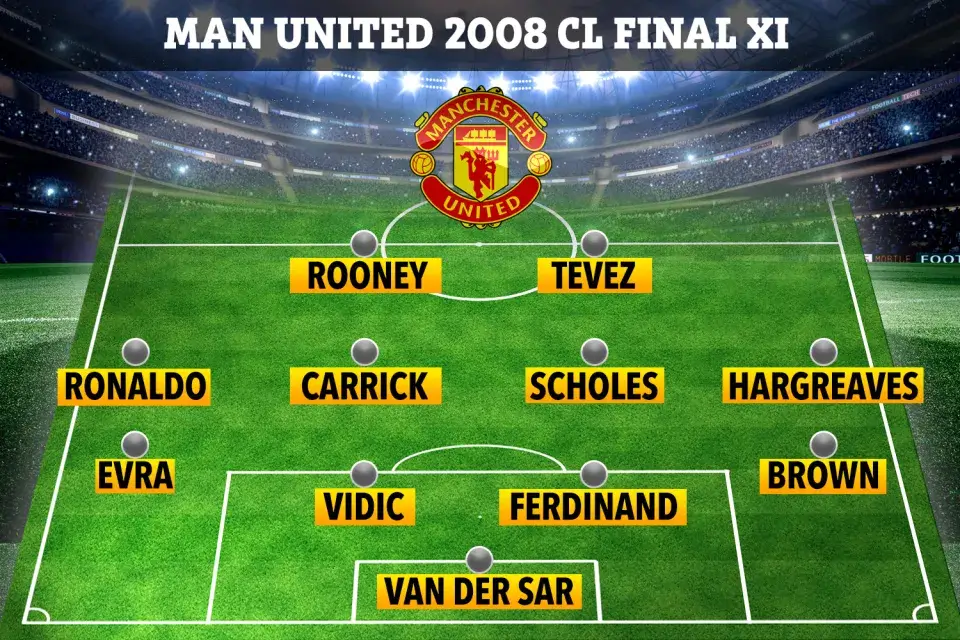
Tactical Overview
The Structure
At its core, the 4-4-2 formation is simple and symmetrical:
- 4 Defenders: Two center-backs and two full-backs.
- 4 Midfielders: Two central midfielders and two wide players (wingers).
- 2 Strikers: A traditional striker partnership upfront.
Roles and Responsibilities
Each position within the 4-4-2 formation has clearly defined responsibilities:
- Center-backs provide defensive stability and aerial dominance.
- Full-backs support wide play and help defensively.
- Central midfielders offer a mix of defensive cover and attacking creativity.
- Wingers stretch the play and deliver crosses into the box.
- Strikers work as a pair, with one often dropping deeper to link play while the other stays higher to finish chances.
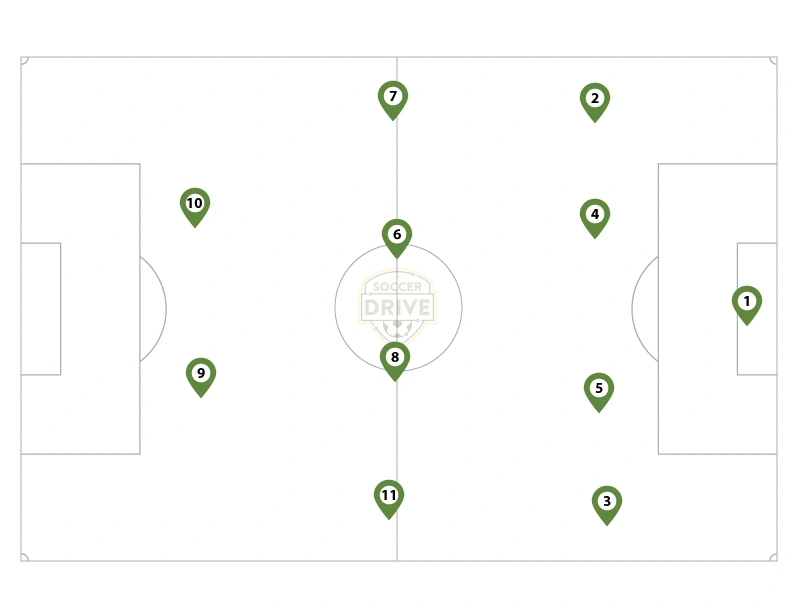
Strengths and Weaknesses of the 4-4-2 Formation
Strengths
- Simplicity: Easy for players to understand and implement.
- Defensive Solidity: Two banks of four create a compact defensive block.
- Balance: Equal emphasis on attack and defense.
- Counter-Attacking Potential: Perfect for quick transitions.
- Wide Play: Wingers provide natural width, making it harder for opponents to defend the flanks.
Weaknesses
- Midfield Overrun: Against formations like 4-3-3, the midfield can get outnumbered.
- Lack of Creativity: The firm structure can limit fluidity in attack.
- Dependency on Wingers: If wingers are ineffective, the team’s attacking options can dry up.
- Struggles Against High Pressing: Modern pressing systems can exploit its predictable passing lanes and keep the team from progressing to the oppositions half.
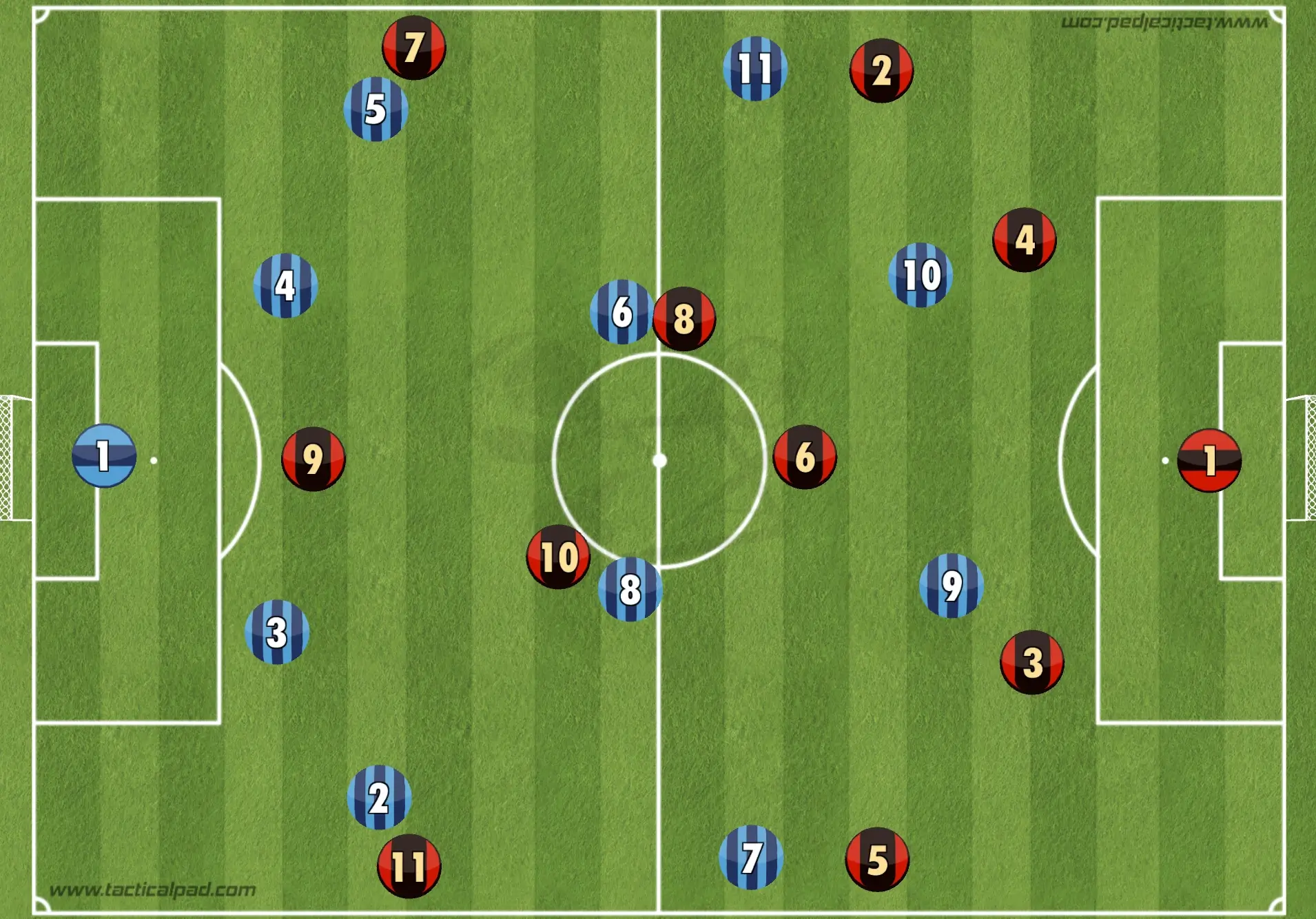
Why the 4-4-2 Formation Declined Over Time
The decline of the 4-4-2 formation can be attributed to the evolution of football tactics and the introduction of modern systems.
The Rise of Modern Tactics
In the early 2000s, possession-based football began to dominate, embodied by Pep Guardiola’s tiki-taka, which prioritized midfield control and fluidity in possession. Formations like the 4-3-3 and 4-2-3-1 became the go-to systems for top managers. These setups allowed for better control, especially in the midfield, effectively outmaneuvering the 4-4-2 formation.
Total Football’s influence on this transition cannot be overstated. The positional interchangeability it introduced inspired managers to favor more fluid and dynamic systems. This evolution made static systems like the 4-4-2 less effective, as they struggled to cope with the movement and passing precision of modern tactics. The most notable thing here is that the number 10 in a 4-3-3 formation could exploit the space between the lines in a 4-4-2 formation due to its free role and connecting role between midfield and attack (e.g. Zidane, Kaká or Ronaldinho). This ability to operate “between the lines” became a crucial factor in the decline of firm formations like the 4-4-2.
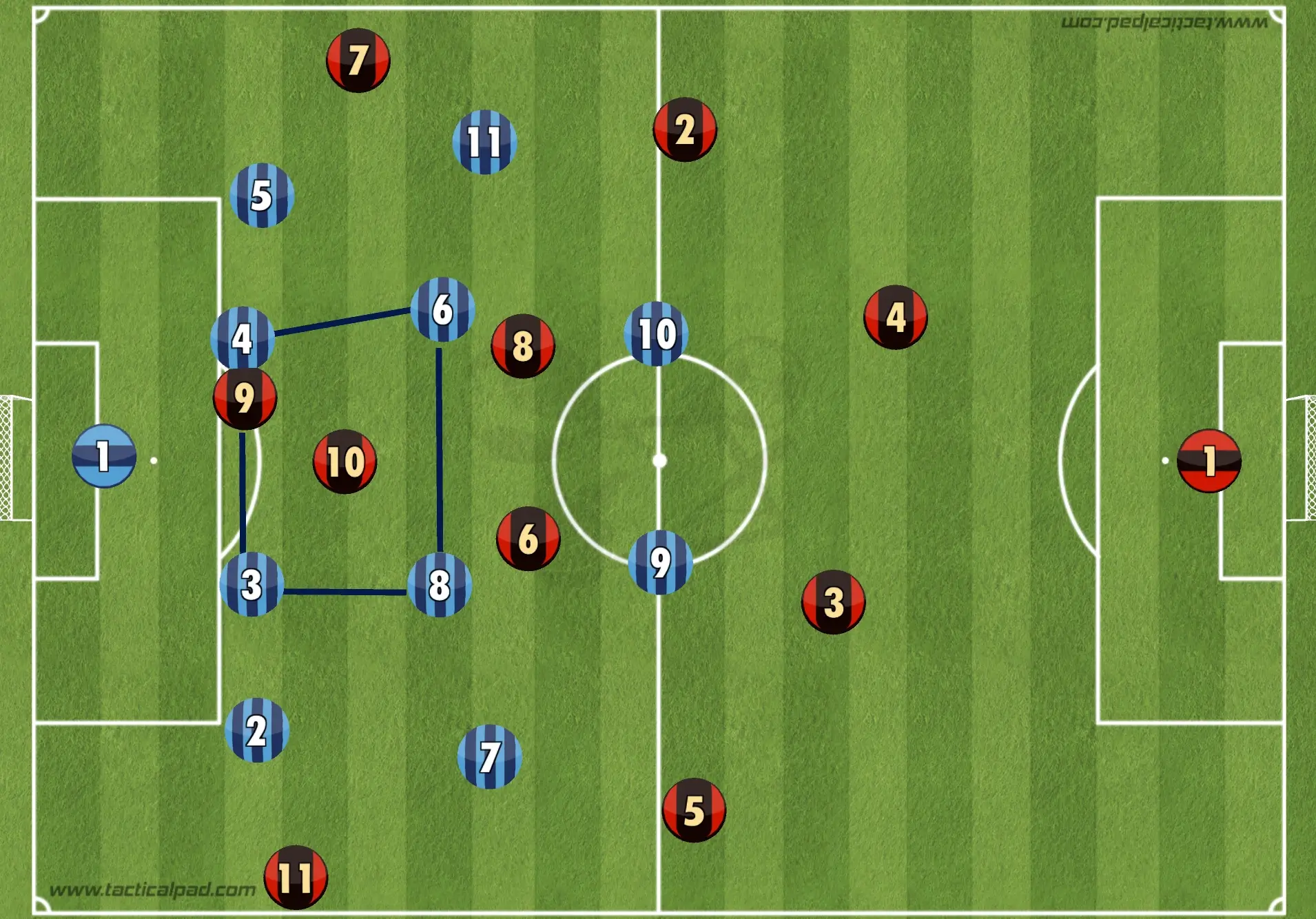
Data and Analytics
The rise of analytics further highlighted the weaknesses of the 4-4-2 formation. Vulnerabilities, such as its vulnerability to high pressing and predictable passing patterns, made it less useful against more dynamic strategies.
Changing Player Roles
Modern footballers are more versatile than ever. Players are expected to adapt to different roles, leading to the rise of hybrid systems. As a result, firm setups like the 4-4-2 are less appealing to managers who prioritize tactical flexibility.
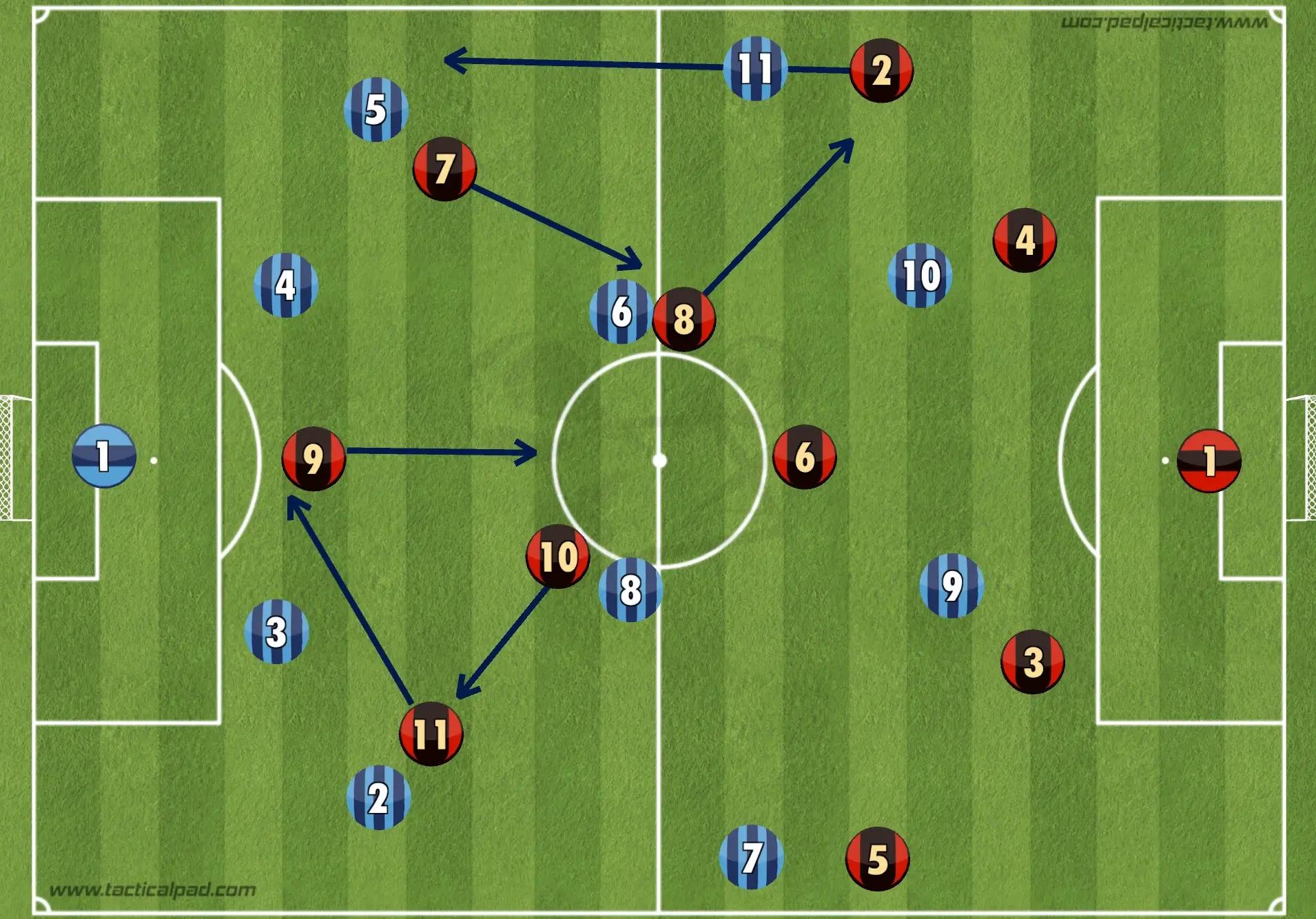
Successful Teams and Managers Using the 4-4-2
Despite its decline, the 4-4-2 formation has been adapted by some of football’s greatest managers and teams.
- Sir Alex Ferguson utilized it to build Manchester United’s dominance during the Premier League’s early years.
- Diego Simeone has used a defensively solid variation of the 4-4-2, relying on compactness and counter-attacks to great success as seen recently in the Champions league game between Atlético Madrid vs Bayer Leverkusen.
- Leicester City’s 2015/16 Title-Winning Team: Under Claudio Ranieri, Leicester revived the formation with a counter-attacking twist, making the most of players like Jamie Vardy and Riyad Mahrez.

Why the 4-4-2 Formation Is Still Relevant
While not as dominant as it once was, the 4-4-2 formation retains its relevance in specific scenarios:
- Situational Use: Managers often deploy it to defend a lead or play counter-attacking football.
- Youth Development: Its simplicity makes it a staple in youth academies, helping young players understand positioning and teamwork.
- Hybrid Tactics: Modern managers like Diego Simeone continue to tweak the 4-4-2, blending it with other systems for added flexibility and more attacking threat.
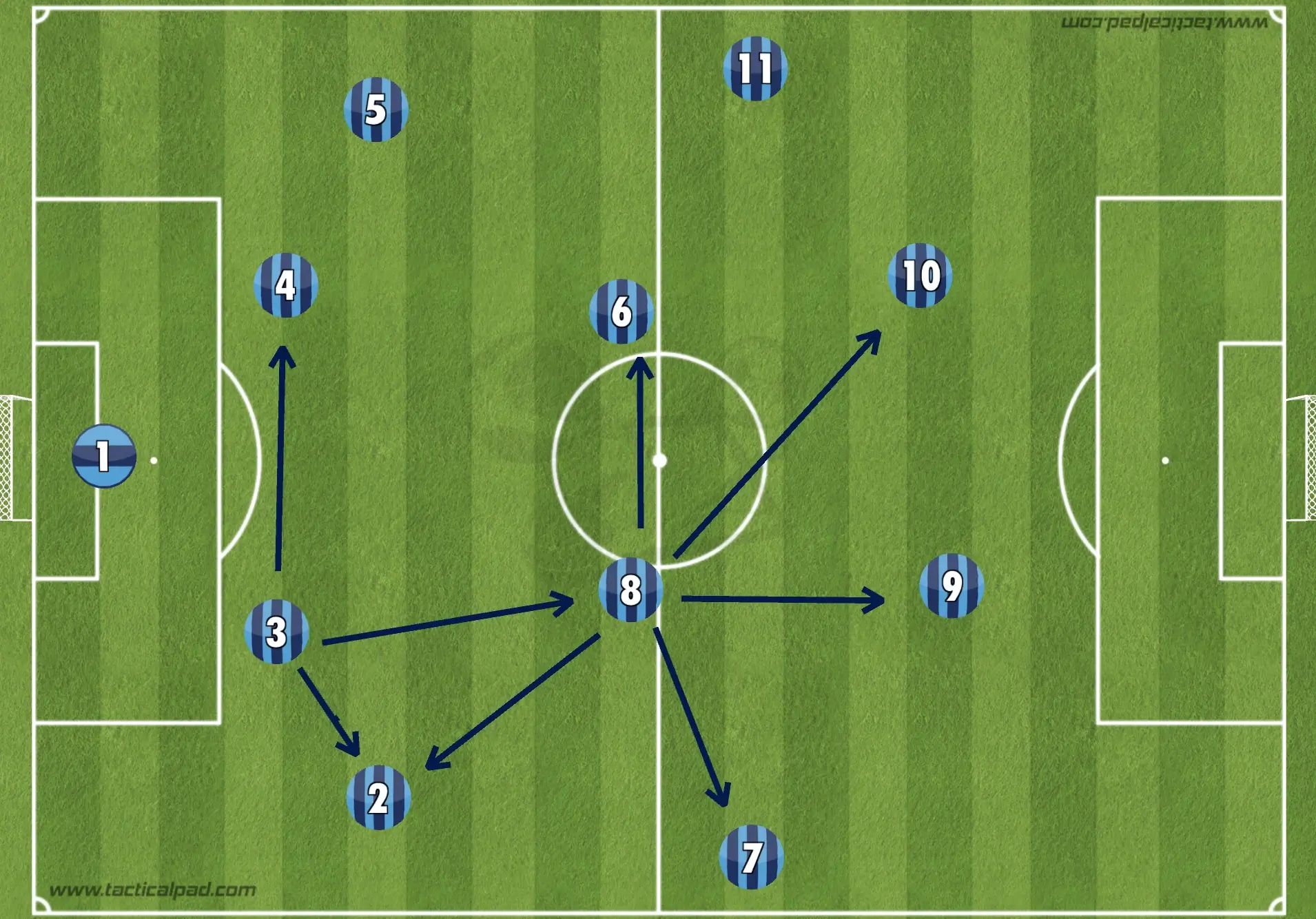
Conclusion
The 4-4-2 formation is more than just a tactical setup; it’s a symbol of football’s tactical evolution. While it may no longer dominate the modern game, its legacy and impact remain profound. From shaping football’s tactical history to being adapted by forward-thinking managers, the 4-4-2 continues to fascinate football enthusiasts.
The rise of Total Football, and later, tiki-taka, exposed its vulnerabilities, particularly its inability to control central areas effectively. But even now, when adapted to modern demands, it holds a place in the tactical toolkit of managers worldwide.
What are your thoughts on the 4-4-2 formation? Could it make a resurgence in modern football? Leave a comment below or join the conversation on our Instagram!

 using WordPress and
using WordPress and
No responses yet